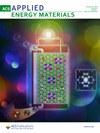语言特点和口音对唤起心理反应和交流结果的影响
IF 5.4
3区 材料科学
Q2 CHEMISTRY, PHYSICAL
引用次数: 0
摘要
在心理反应理论的指导下,我们研究了语言特点对唤起反应和交流结果的影响。2(控制性;高/低)×2(具体性;具体/抽象)×2(恢复后记;有/无)×3(口音;标准美式英语[SAE]/印度语[非SAE]/基于文本的信息)的被试间设计(N = 1,099, 研究 1 和 2)结果显示,高控制性语言增加了自由威胁,被认为比低控制性语言更明确。与抽象语言相比,具体语言被认为更需要注意、更公平,产生的自由威胁也更小。此外,恢复后语减少了自由威胁和信息的明确性,包括非南非洲英语口音与南非洲英语口音的恢复后语的差异。与非SAE口音相比,SAE口音被认为更流利,更不难理解,但却会引起更多的愤怒、更多的负面认知,并被认为能力较弱(研究2)。本研究讨论了社会影响和群体间交流的意义。本文章由计算机程序翻译,如有差异,请以英文原文为准。
The Effects of Language Features and Accents on the Arousal of Psychological Reactance and Communication Outcomes
Guided by psychological reactance theory, we examined the effects of language features on arousing reactance and communication outcomes. Results of a 2 (controllingness; high/low) × 2 (concreteness; concrete/abstract) × 2 (restoration postscript; present/absent) × 3 (accent; Standard American English [SAE]/Indian [non-SAE]/text-based message) between-subjects design ( N = 1,099, studies 1 and 2), revealed high-controlling language increased freedom threat, was perceived as more explicit than low-controlling language. Concrete language was perceived as more demanding of attention, fair, and producing lesser freedom threat than abstract language. Furthermore, restoration postscripts reduced freedom threat and message explicitness, including differences in restoration postscripts for the non-SAE relative to the SAE accent. Compared to the non-SAE accent, the SAE accent was perceived as more fluent and less difficult to understand, yet elicited more anger, more negative cognitions, and was perceived as less competent (Study 2). The implications are discussed vis-à-vis social influence and intergroup communication.
求助全文
通过发布文献求助,成功后即可免费获取论文全文。
去求助
来源期刊

ACS Applied Energy Materials
Materials Science-Materials Chemistry
CiteScore
10.30
自引率
6.20%
发文量
1368
期刊介绍:
ACS Applied Energy Materials is an interdisciplinary journal publishing original research covering all aspects of materials, engineering, chemistry, physics and biology relevant to energy conversion and storage. The journal is devoted to reports of new and original experimental and theoretical research of an applied nature that integrate knowledge in the areas of materials, engineering, physics, bioscience, and chemistry into important energy applications.
 求助内容:
求助内容: 应助结果提醒方式:
应助结果提醒方式:


